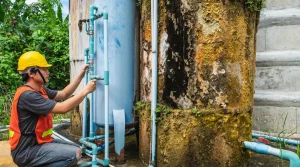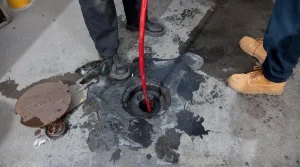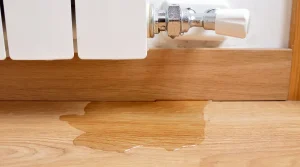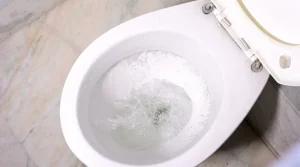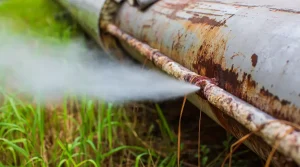Ideally, you would grab the closest flange plunger and unclog the toilet in a matter of minutes. What do you do, though, if there is no plunger and your toilet is clogged? It’s possible that you recently relocated. Maybe you’re at your friend’s house who doesn’t have a plunger. Exist any method than using a plunger to unclog a toilet?
Fortunately, it’s not as difficult (or disgusting) to unclog a toilet without a plunger as you may think. Without a plunger, there are really a number of surprisingly simple techniques to unclog even the most stubborn clogs. Here are the top techniques for clearing a clogged toilet, in the order that experts suggest you try them:
#1: Hot water to clear a clogged toilet
To start, get a sizable pail of boiling water. Keep in mind that you want heated but not scalding hot. The porcelain of the toilet bowl may crack when exposed to boiling water. Simply fill a bucket with the warmest water that your tap can produce. When the toilet bowl is nearly full, pour that hot water in it and let it sit.
Any solid waste should be sufficiently broken down by the heat for the toilet to flush it away. Do not panic if this doesn’t work; simply try the next approach. Just get started with the “hot water toilet trick.”
#2: Using dish soap, unclog a toilet
Put a good amount of dish soap in the toilet bowl. Use a product like Dawn that can cut through thick grease. Give it fifteen minutes or so to sit. Any solids will break down with the aid of the soap. Additionally, it will lubricate the bowl and pipes, which will facilitate the clog’s passage into the drain.
Try the “hot water method” once again after dropping the dish soap into the toilet. The basin should sit for another thirty minutes after being filled with hot (but not boiling!) water.
Try flushing once more once the water and soap have had a chance to unclog. Repeat the procedure once more or leave the dish soap in the toilet overnight if it doesn’t resolve the issue.
#3: Toilet Unclogging Epsom Salt
You’re in luck if you have any extra Epsom salt. Water begins to bubble and fizz after Epsom salt is added, which is the result of a chemical reaction. Clogs can actually be removed with the help of all that bubbling and fizzing.
Fill your toilet bowl with a significant amount of Epsom salt. Try flushing it after letting it sit for fifteen minutes. After the initial flush, you ought to experience success. This method can be used in conjunction with the dish soap and “hot water trick” for added security.
#4: Make use of a toilet brush or wire hanger
This method of unclogging a clog is the simplest. Reach inside if you’ve tried heat and chemical reactions without success. If a toilet brush is nearby, use it; if not, spread out a wire hanger. Your chosen object should be inserted into the toilet bowl and moved around the hole.
We advise donning gloves because this could be a little nasty, depending on what the clog entails. While you’re working, take care not to accidentally damage the toilet bowl. If you’re careless or rough with the wire hangers, it’s simple to scuff up porcelain.
#5: Purchase a toilet plunger
I hope you were successful in clearing the blockage in your toilet. There are a few things you need to do now that it’s working.
Buy a flange plunger first, of course. These plunger-less methods will get the job done in a pinch, but they’re no substitute for the real thing.
Next, ascertain the primary cause of your toilet’s clogging. Does this frequently occur? If it happens, there might be a bigger issue with the plumbing in your house.
#6: Dial Your Neighborhood Smell Good Plumber
Sometimes drain obstructions just cannot be unclogged without expert assistance, with or without the use of a plunger. Sometimes larger plumbing problems lead to annoying recurrent clogs and other complications. Contact the experts at BJC Plumbers North Bergen in either scenario. We’ll investigate your home’s plumbing to determine the cause of these obstructions. You won’t require that new plunger for a while with our assistance, we’re confident.


